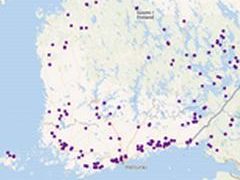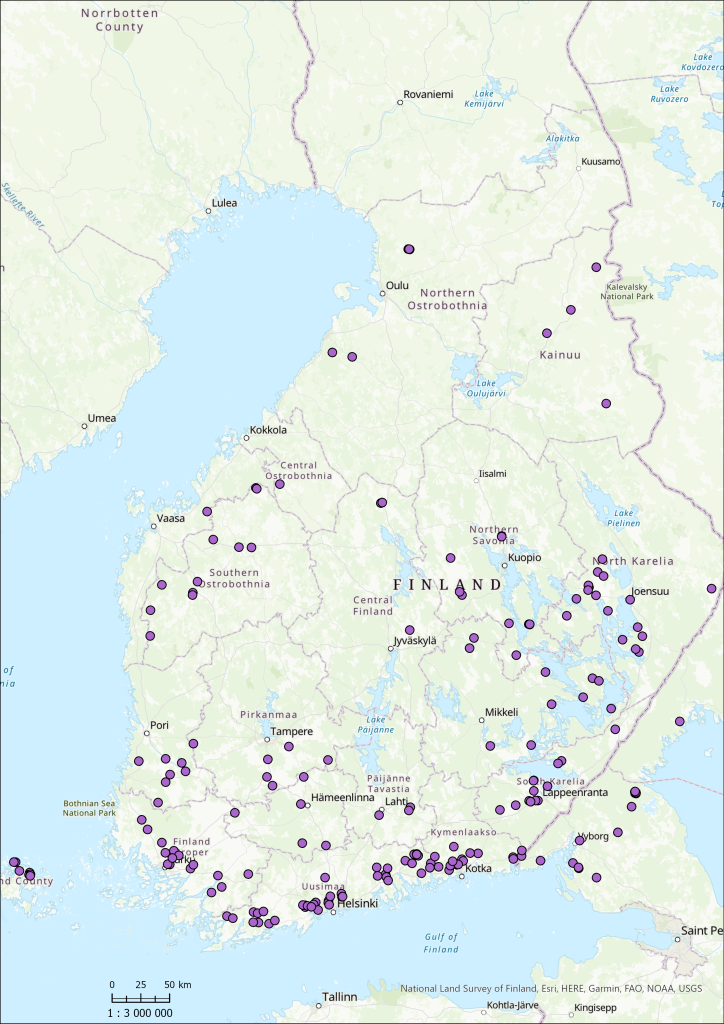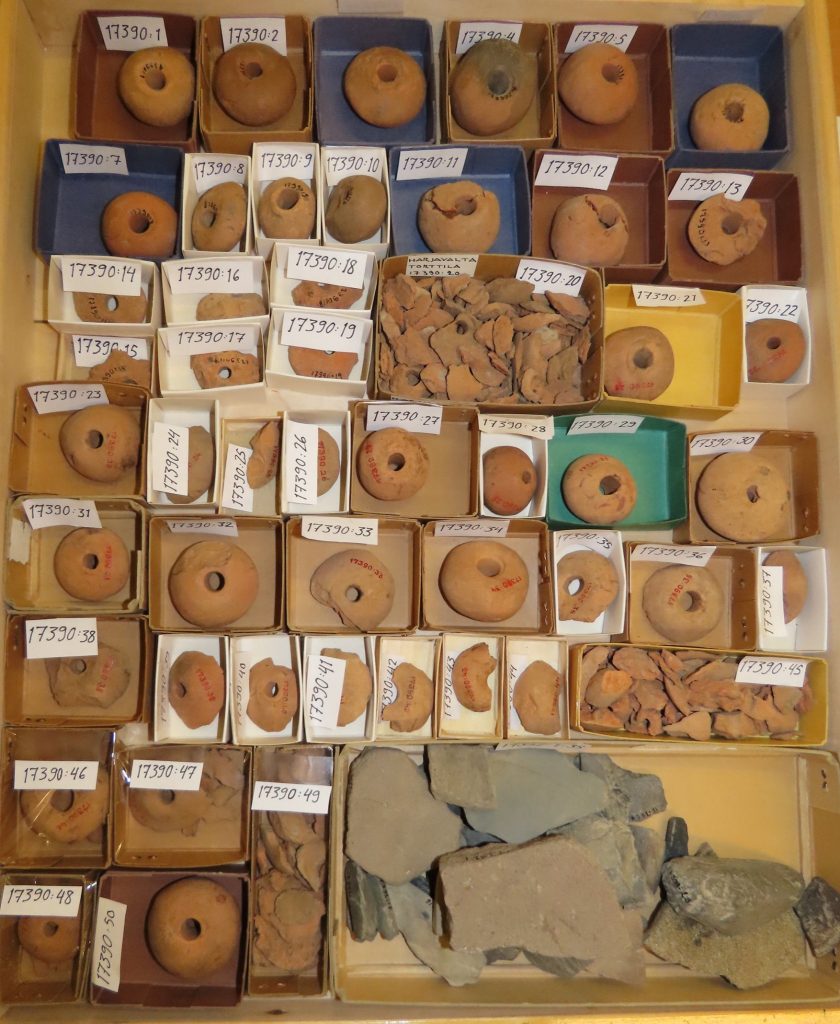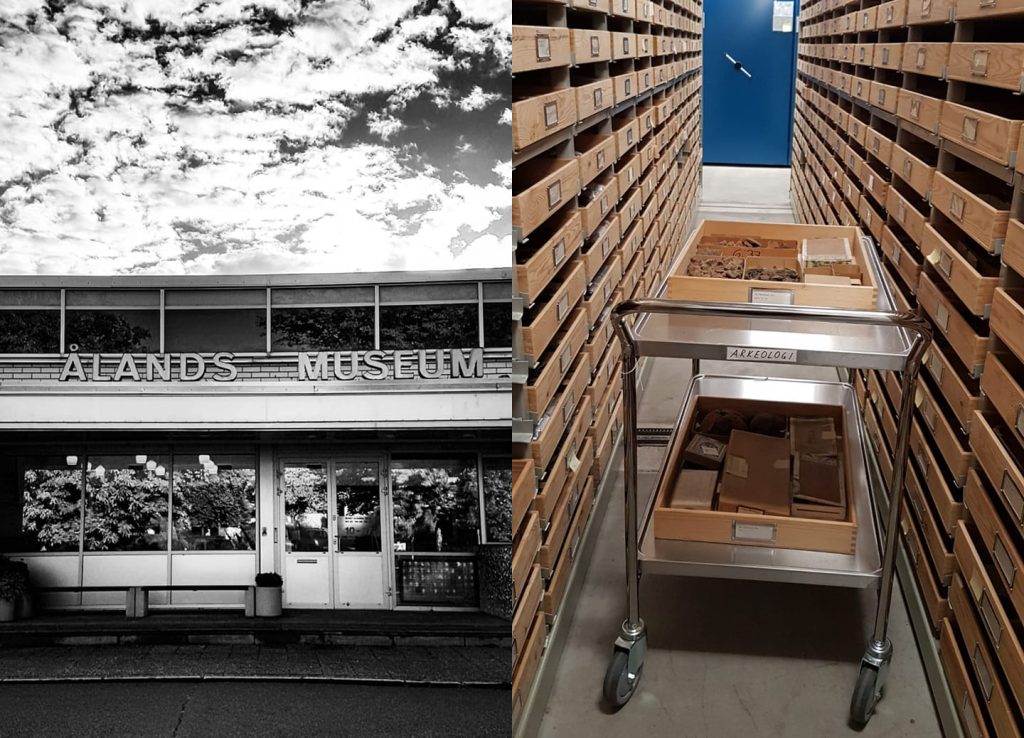What is this data about?
You have found your way to a new but also historical dataset. The clay artefacts this data presents date all the way back to the prehistoric time of Stone age. This data puts on a map the places where archaeological clay artifacts have been found all around Finland and Karelia. With this data you can also read information of every single artefacts and their categories, types and subtypes, for example. The data was created for a real need of many research disciplines to provide proper archeological data as a background information for genetic research of the area.
Spatial data of the clay artefacts was collected so the fields of archeology, genetics and linguistics could combine their knowledge. This data could be used to understand how these different disciplines have interacted in the historical context and altered human development.
How data is created?
The whole journey started in 2009 with the Argeopop project at University of Helsinki. At first, only data of Stone age artefacts was gathered but later on also Iron and Bronze age artefacts were gathered to the data set. In 2019 a grant was applied for to publish the data and academic text in a project called “Beakers and speakers” (suom. Kipot ja kielet). The Uralian triangulation iniative URKO continues to publish these data sets.
Creating this kind of data is not the easiest thing. For this data set researchers had to get permissions access to the Stone age collections artefact collections from the Finnish heritage agency. That took a lot of time and needed some special agreement.
Because most of the artefacts are from heritage sites and ancient monument sites, the real discovery location was sometimes unknown and researchers had to make some compromises with the coordinates. For example they had to find coordinates from a register of ancient monuments or have a look for site inspection reports to figure out the coordinates. Sometimes artifacts locations were marked only to a house or a village, which made it difficult to have an accurate location.
Typology is a challenge with this type of large data set on Stone age artefacts. Because of its historical aspect, researchers had first to study more about stone age artefacts and clay artefacts in order to be able to evaluate them. Sometimes with artefects that are this old, it is hard to make a evaluation of the category it belongs to. As the archeological researcher and data owner Petro Pesonen said: “sometimes there just isn’t a more exact typological categorization for them”.
Collaborating can challenge your way of thinking
Collecting and creating this kind of data needs specialists and experts from different disciplines. So collaborating becomes an important part of the process and it is a good way to learn from each other. Researchers said that they enjoyed work within a very interdisciplinary group.
“You need to learn to listen to other fields and their perspectives. As a quite humanistic scientist it is sometimes funny to work with natural scientists who won’t accept “if” as an answer in the research.” – Petro Pesonen
Who can use this data?
This data is mostly targeted to researchers because of its specific information. Still, the data is published openly so anyone interested can look at it. The creators of the data wanted to make it open because accessible data can open new possibilities for new interpretations and unknown ideas.
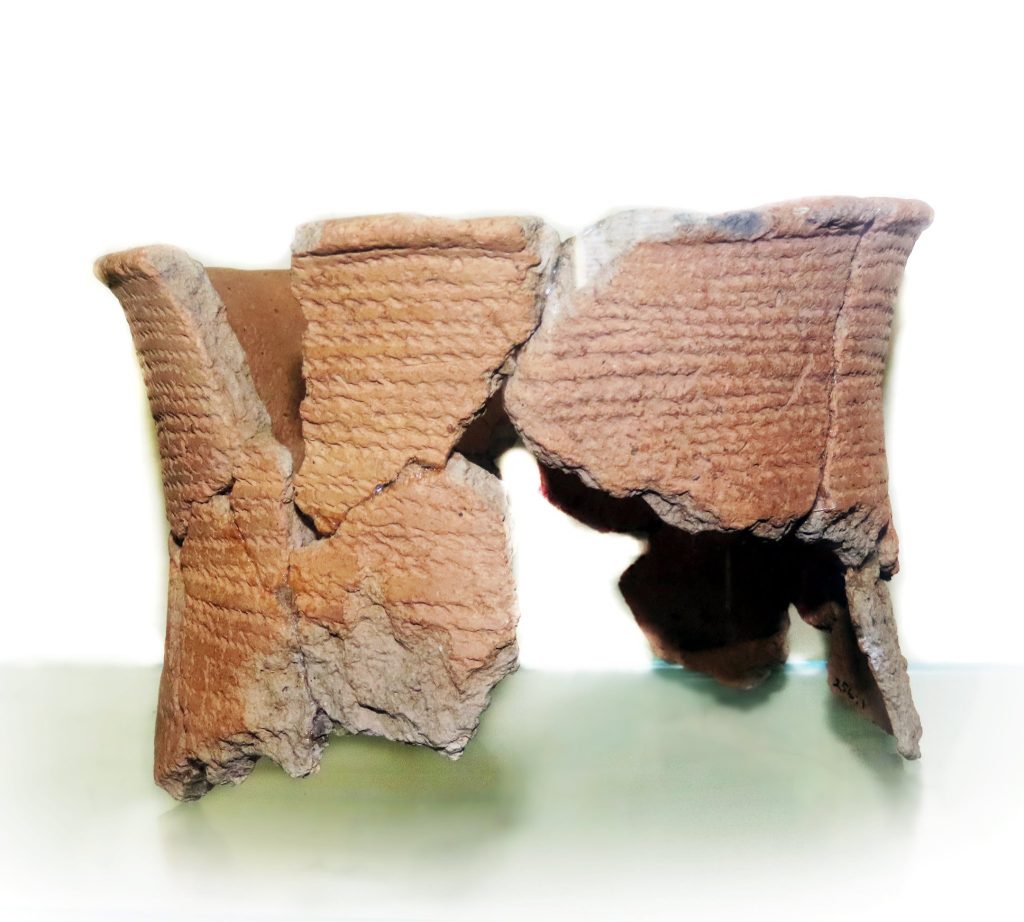
For more informations, check these out:
New tools for studying Finnish archaeology and Uralic languages: https://doi.org/10.15184/aqy.2021.113
Beakers and Speakers (suom. Kipot ja Kielet) : https://www.facebook.com/kipotjakielet
(Photo: Ulla Moilanen / Kipot ja Kielet)

